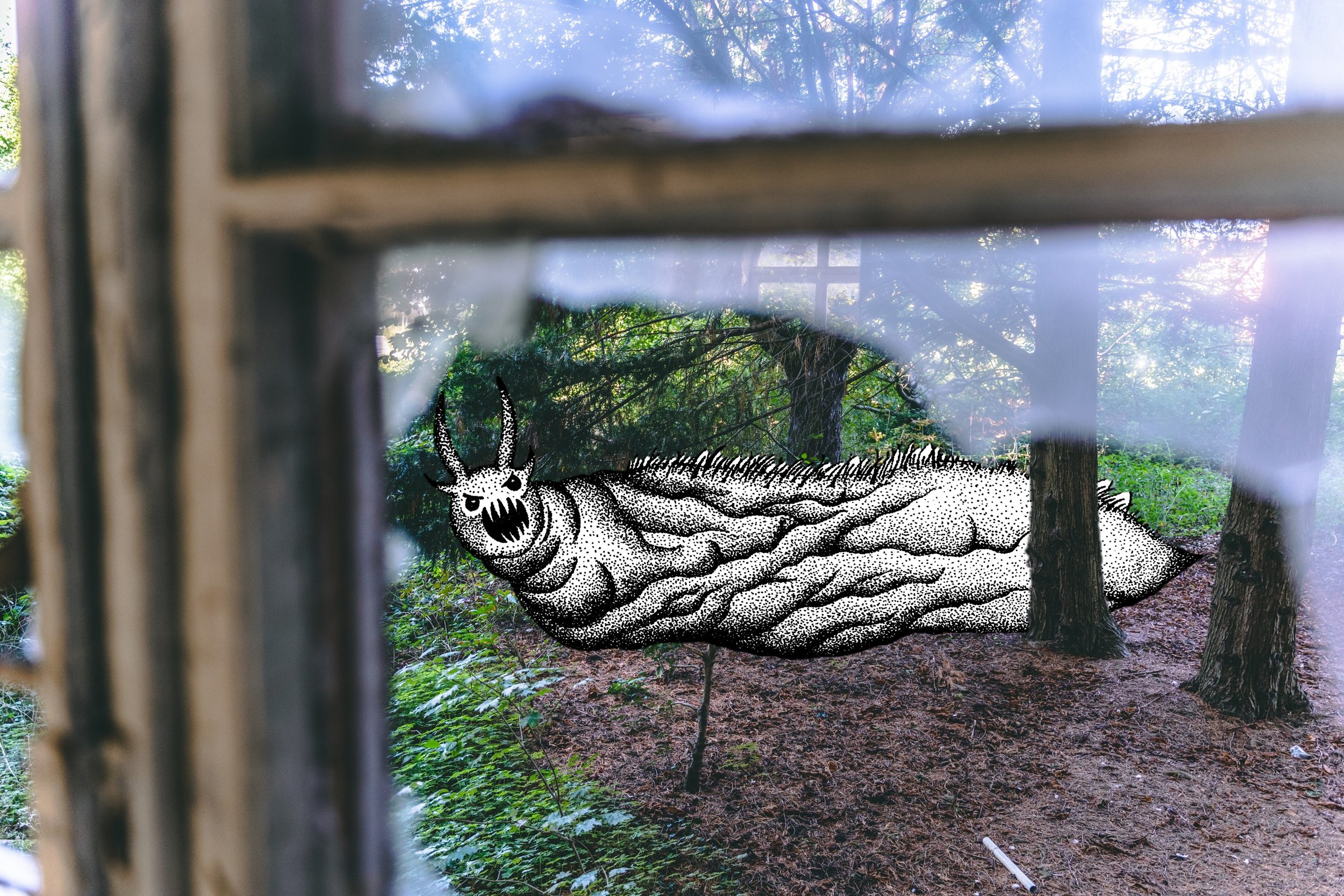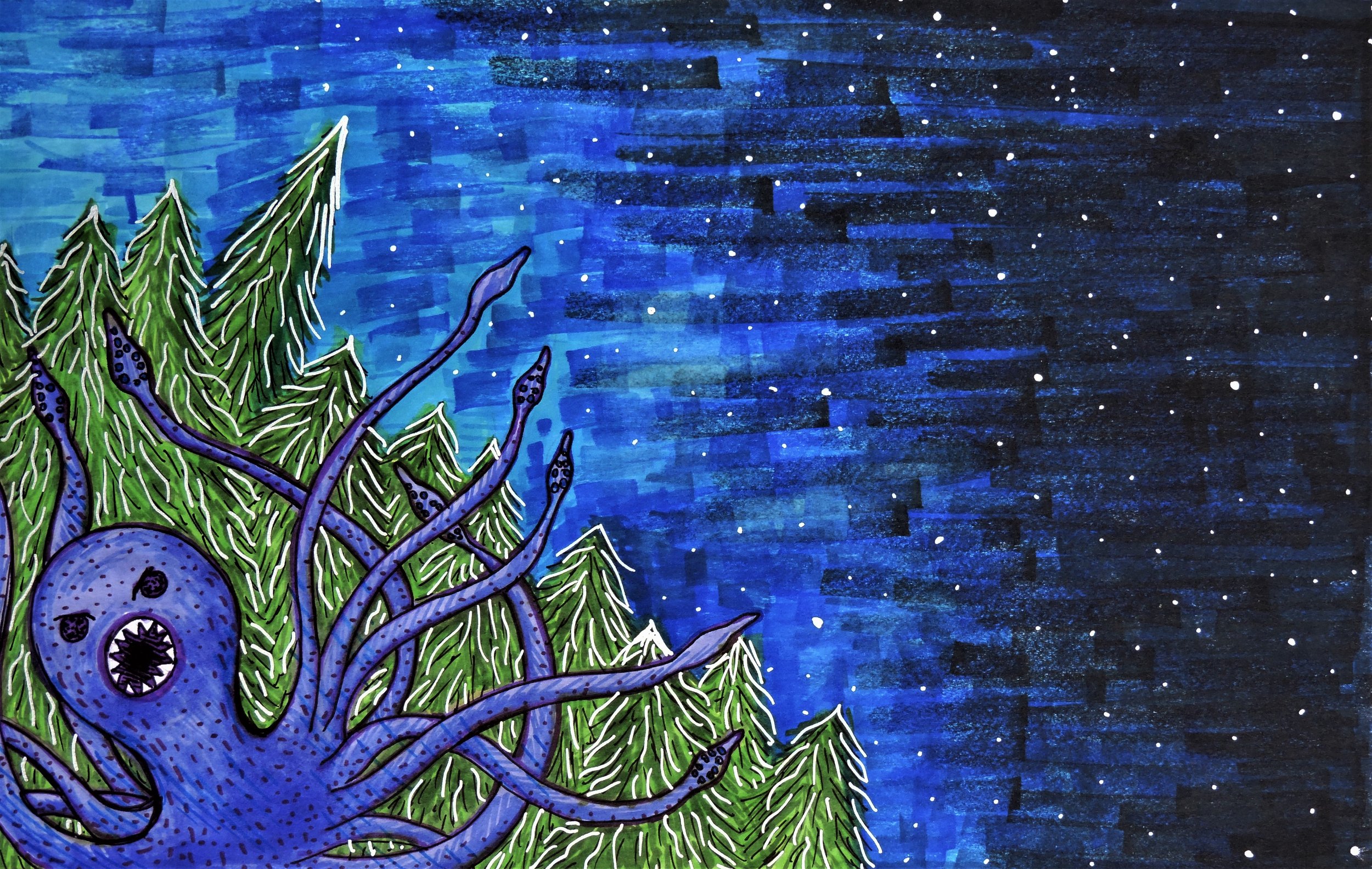Once upon a time, King and Queen Acron of Balini birthed a beautiful daughter with pitch black hair. They had spent many years trying to conceive, and when they were finally successful they were ecstatic. However, on the day of her birth, the evil enchantress Liaandra the Bold strode into the castle, miffed that the King hadn’t paid her wages, for back in those days, she worked as a powerful battlemage on behalf of the royal family. But surely, so the story went, the King couldn’t be expected to remember something so paltry as wages on the day of the birth of his daughter, a much long-awaited event due to the queen’s struggles to bear children.
But Liaandra the Bold was most displeased, and as the King and Queen stood at the head of the throne room, ready to introduce the child to the court, her words echoed, “You dare treat me so, my liege?” Her voice was tinged with a vile sneer. “Throw me to the wolves, and so too shall your daughter be thrown to the wolves!”
And then she strode from the throne room in fury, her emerald green cape swirling in the wind.
At first, everyone thought they were just the ordinary words of an angry enchantress. But that night, the wolves outside howled fearfully in the gusty windy night. And the next night, the creatures drew closer to the castle, and the next night, even closer.
Of course, the king and queen had no intention of letting the wolves anywhere near their daughter. So they put out a bounty: any man or woman who brought a dead wolf to their doorstep would be paid a handsome sum. And as their daughter grew in age, wisdom, and stature, they resolved never to let her outdoors, nor anywhere near where she might encounter a wolf.
But their plans were ever foiled. Not a single man nor woman managed to successfully capture, maim, or kill a wolf, though the entire kingdom could clearly hear their howls from the forest and see their paw prints in the snow. And when the princess was a mere five years old, she sneaked out from under the watchful eye of her nursemaid, and made it all the way to the courtyard before anyone caught her.
Her parents added more guards, more nursemaids, and more servants to keep a watchful eye on her, but when she was eight, she escaped again. This time, they caught her all the way at the castle wall. And when she was fifteen—well, at that point, she was too smart, too clever, and too motivated, and she vanished without a trace. It was the middle of the winter, and on the night of her departure, and they tracked her footprints deep into the forest to a clearing, where they were most distraught to find the prints of dozens of wolves.
###
They said it was a curse, but for the life of her, Princess Sable couldn’t understand why.
The wolves, she discovered, were kind and gentle, soft and warm. For as long as she could remember, she listened to their song in the distance, a beautiful strain that swirled in the winter wind, danced among the conifers, and harmonized with the golden light of the full moon. And every time she had opened a window, or even dared simply to peer out, a nurse or a servant or a governess would rush over and slam it shut in her face.
There was to be no listening to the wolves, they told her, or even thinking about them, and every story book, history book, painting, and tapestry which featured wolves of any kind was removed from the palace as soon as it was discovered. And while Princess Sable’s life had been comfortable, she found it severely lacking. It was as if there was a hole inside of her she needed to fill.
When she ran away at age five, it hadn’t been with ill intent. She’d only wanted to hear the whispers of the wolves a little more clearly. And when she was eight, she’d wanted to meet one. At age fifteen, however, her motivations had been a lot different. For as fearful as her parents were of the great beasts of prey who prowled their kingdom like invisible demons, the truth was, Sable was tired of being protected. She had barely had a moment alone in her entire life. She had no free time, no alone time, and even her social life was carefully regulated by the king and queen.
What she wanted was a little freedom.
Any freedom at all.
And she knew, deep inside, that the only place she would find that freedom was with the wolves.
So, on the eve of her fifteenth birthday, after many weeks and months and even years of planning, she slipped from the castle and made her way to the woods. She didn’t feel the cold of the wind nor the icy burn of the snow underfoot—only the thundering of her heart and the rush of pleasure at finally being free.
And when she arrived in the clearing, the wolves waited for her, panting from their own race through the wintery wood, and then led her to their den in the far reaches of the kingdom.
No, Princess Sable soon learned, it was not a curse at all. For the magic of the great enchantress wrapped around her like warm boots and gloves. It gave her warmth and safety even as snow swirled around her and ice formed on the trees. It sneaked into her mind in the form of knowledge—of how to light a fire, how to cook food, how to trap smaller animals, how to forage for edible plants, how to boil water. And as she matured in age and beauty, so too did she mature in skill, strength, and determination.
The king and queen, however, lamented the loss of their daughter. They renewed the bounty on the wolves, with an even higher sum, and added one caveat: whoever could bring their daughter back from the grip of the wolves would be rewarded beyond measure. Many speculated about what they meant by that. Some thought they were offering riches, others preferred a title, and some even considered that the king and queen intended to offer the princess’s hand in marriage to whomever could find and save her.
The princess, of course, knew none of this. She now lived with absolute freedom and abandon, protected by the gift the enchantress had given her, and never lacking for companionship. For all the woods of the forest were at her beck and call. And together they roamed and ran and thrived.
But one day, everything changed. She and the wolves were out for a run when they stumbled upon a small cabin in the woods, and coming from inside, Sable could hear the small cries of what she thought was a child. She bade the wolves to wait quietly while she sneaked up to the cabin and peered through a small window. She was shocked to see not a child, but a woman, of middling age, sitting in a chair by a roaring fire and sobbing into her hands. Her cries racked her whole body, and Sable felt a well of compassion sweep over her.
So she knocked on the door.
“I saw you weeping,” she said by way of greeting. The social niceties she’d learned as a princess weren’t more than a distant memory at this point. She didn’t even know how long she’d been gone from her life as a princess. “Can I help?”
“My dear!” the woman exclaimed. “Come in! You must be freezing!”
Sable looked down at herself and for the first time since she’d run away, realized how she must look to others. She wore a thin dress, full of holes and covered with dirt; her black hair, while she washed and braided it weekly, was nearly to her knees in length and full of sticks and leaves; and she wore no shoes.
“Oh no,” she assured the woman, even as she willingly stepped into the cabin. “I am fine. I am protected. I was merely concerned for you.”
“You’re too kind.” The woman’s eyes and cheeks were reddened by the tears. “Perhaps I could give you some soup?”
“I haven’t had soup in…” Sable trailed off. She couldn’t remember how long it had been since she’d had soup. “May I ask why you were crying?”
“My husband has left,” the woman replied. “And I fear for him.”
“Where has he gone?”
“He says he has gone to improve our fortunes,” the woman replied, “but I think he has gone on a fool’s errand.”
“Improving your fortunes doesn’t sound too bad,” Sable said. “What does he plan to do?”
“He plans to find the lost princess,” the woman said.
“Oh.” Sable frowned. “Why? Has she done something wrong?”
“Have you not heard?” The woman once more glanced at Sable’s attire. “Surely not, if you are living in the woods. Many years ago, when the princess disappeared, the king and queen offered a handsome sum for her return. But none have found her.” The woman sighed. “It has been seven years, and now the queen is ill. She will bear no more children and the king must name an heir to the throne. They have put out one last call to find her, and if she does not return, then she will be presumed dead and the king will name a new heir.”
“Your husband thinks he can find the lost princess?” Sable asked, growing concerned.
“He wants to try,” she said, “with a hope of earning the riches promised by the crown.”
“I see.” Sable took a sip of the soup. “And why did you not go with him?”
“How could I?” the woman asked. “And give up our home and gardens and everything we have worked so hard to build together?”
“Is your home and garden more important than your love for him?” Sable asked, not looking up from her soup. It was quite delicious.
The woman sat quietly for a few moments. “I suppose not.”
“Perhaps you should go after him,” Sable said. “Has he been gone long?”
“Only a few days.” The woman looked at Sable curiously. “And what of you?”
“I am only passing through,” Sable said. “But wanted to make sure you were okay.” She drained the last bite of soup. “I will leave you to your tears.”
“Wait,” the woman said. “If… if I were to go after him—survival would be difficult. It is frigid cold, and taking such a long journey alone would be difficult. If you know these woods well, perhaps you have a thought for how I might take such a journey on my own.”
“Oh.” Sable thought for a moment. “I suppose I could help you.”
“You could?” the woman exclaimed. “Would you?”
Thus, Sable agreed to escort the woman to the edge of the great forest.
Stay tuned for updates!
Click here to sign up for my newsletter to find out when you can get the rest of the story!











































